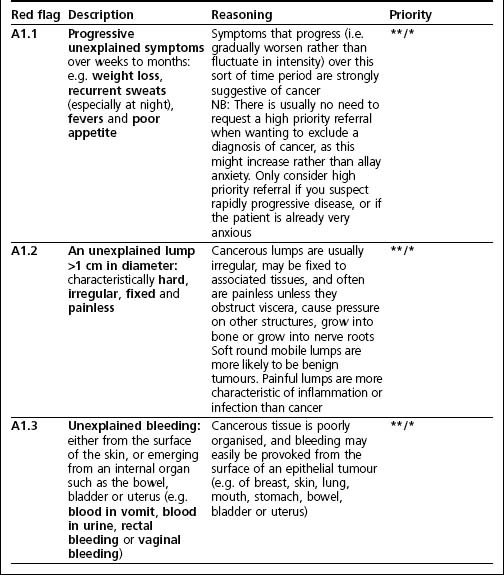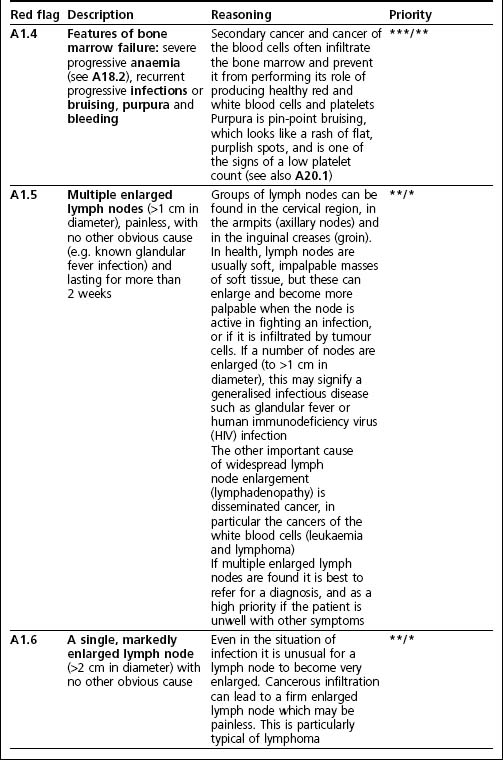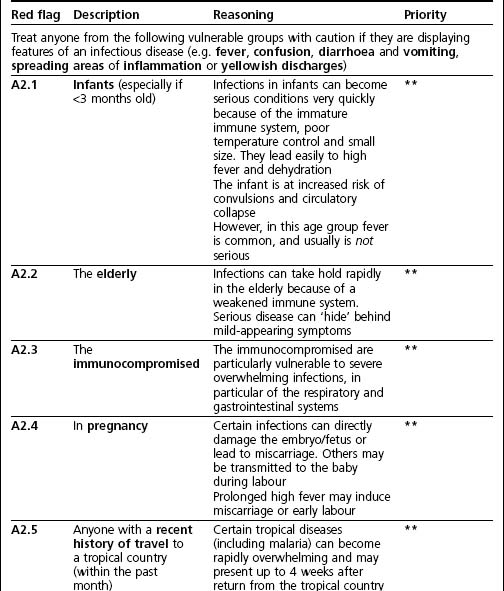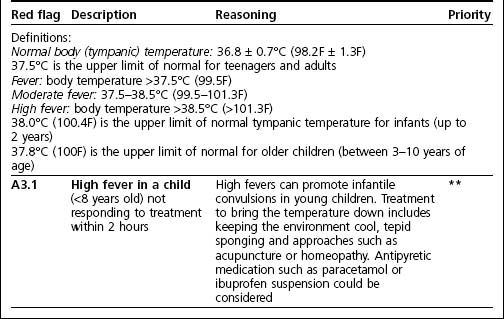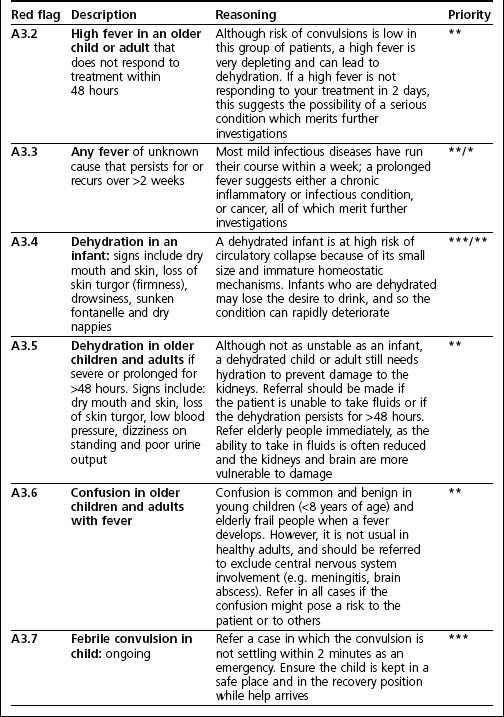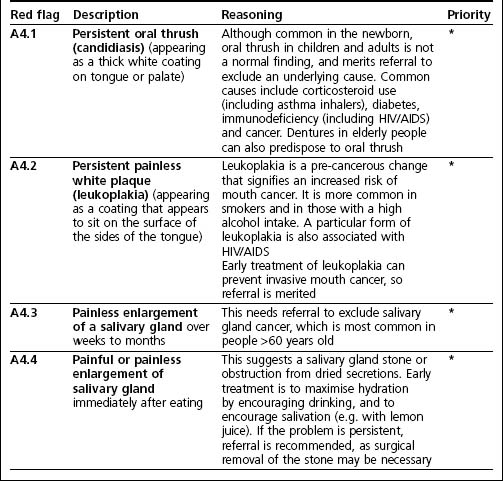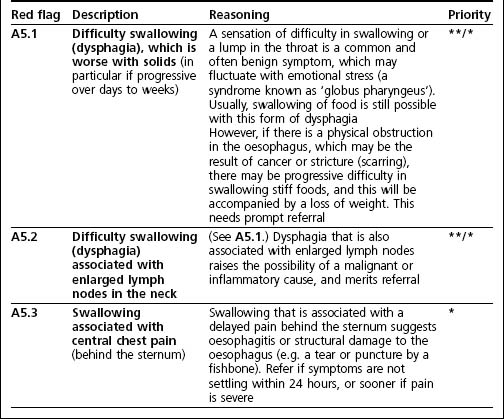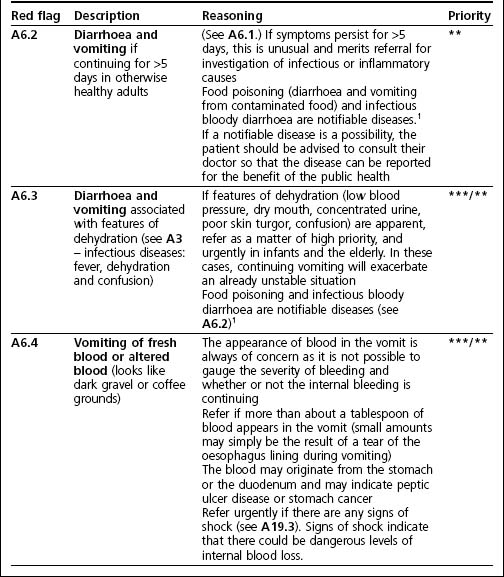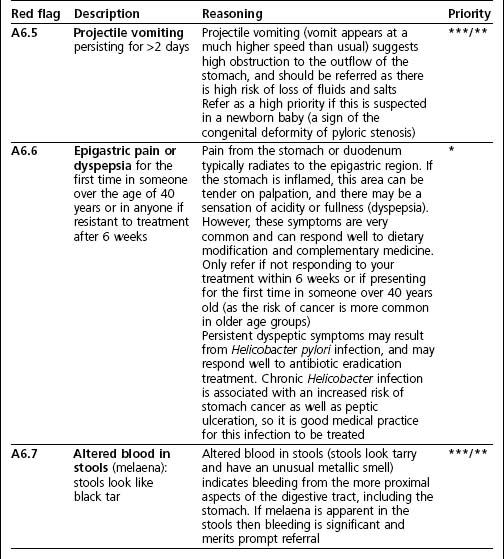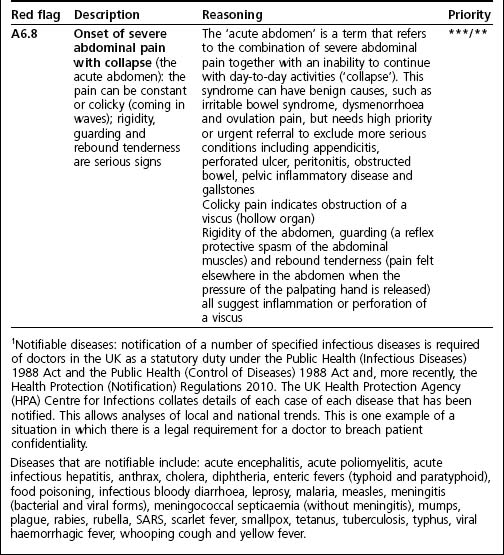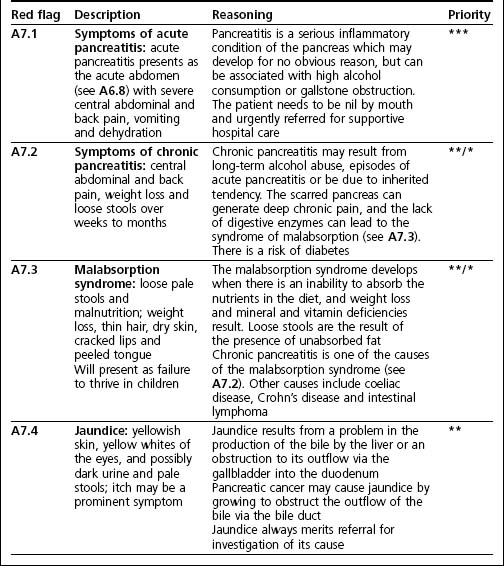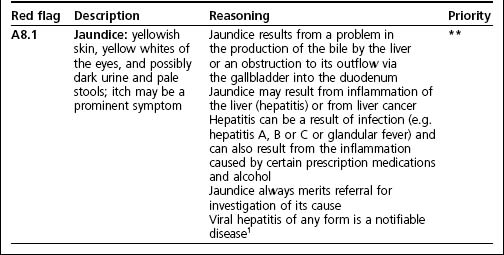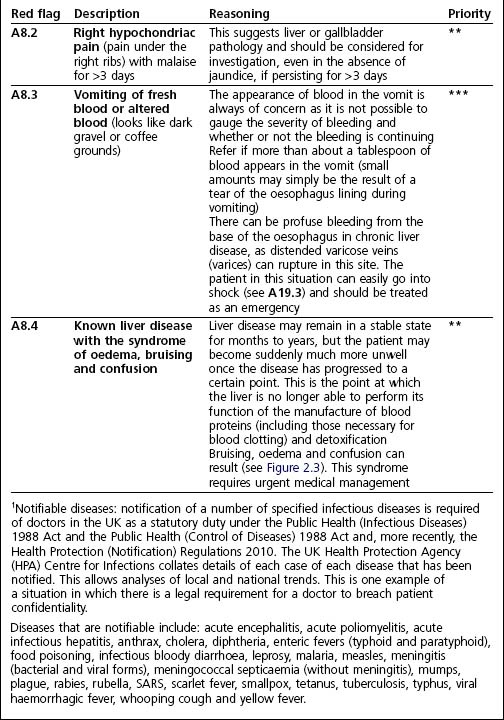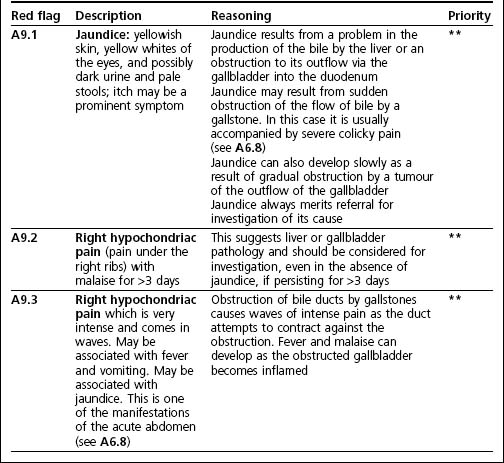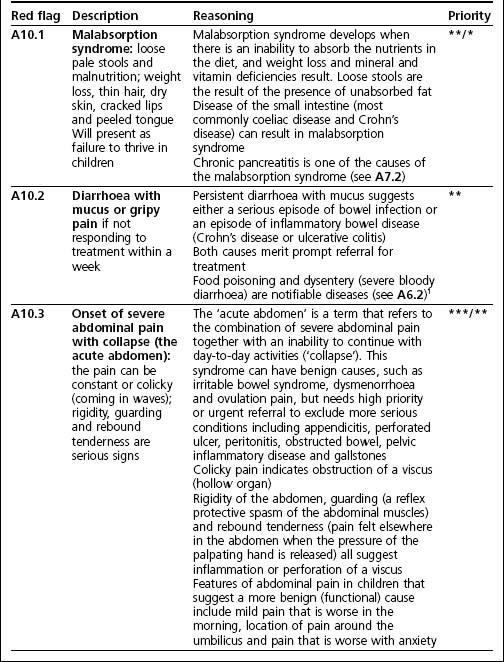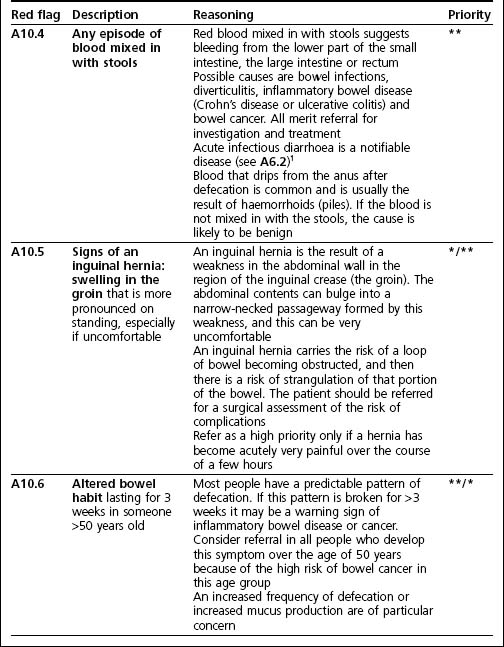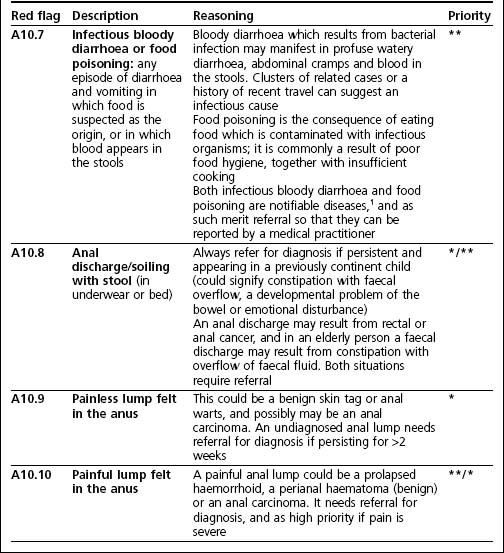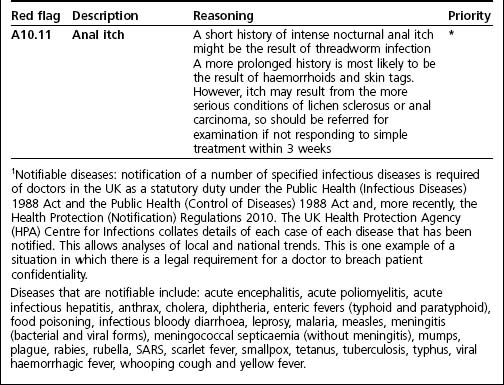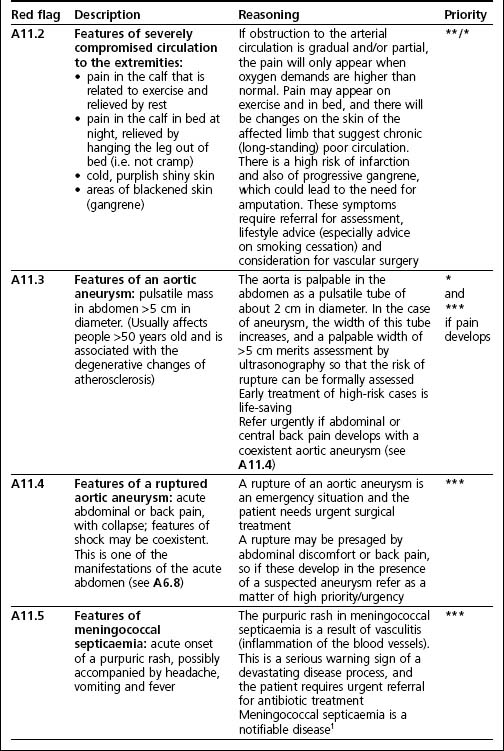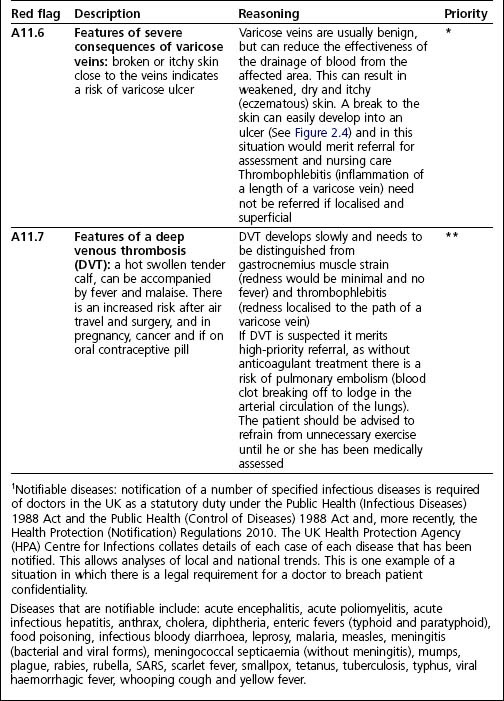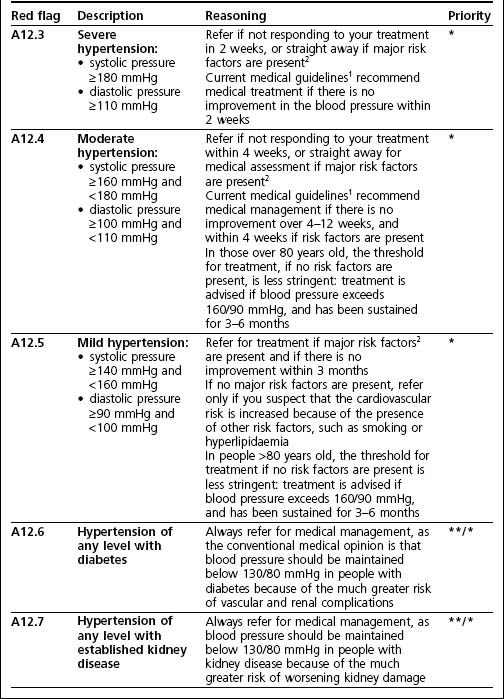Chapter 2 A tables
Red flags ordered by physiological system
Introduction
The A tables show the categorisation of urgency of referral which is described in Chapter 1:
*Non-urgent: a non-urgent referral means that the patient can be encouraged to make a routine appointment with the medical practitioner (GP) and this ideally will take place within 7 days at the most.
**High priority: a high priority referral means that the patient is assessed by a medical practitioner within the same day. This can be either as a home visit or at the medical practice.
***Urgent: the urgent category is for those situations when the patient requires immediate medical attention, and this may mean summoning an on-call doctor or calling the paramedics to the scene.
The order of the A tables can be found in the contents pages of this text.
